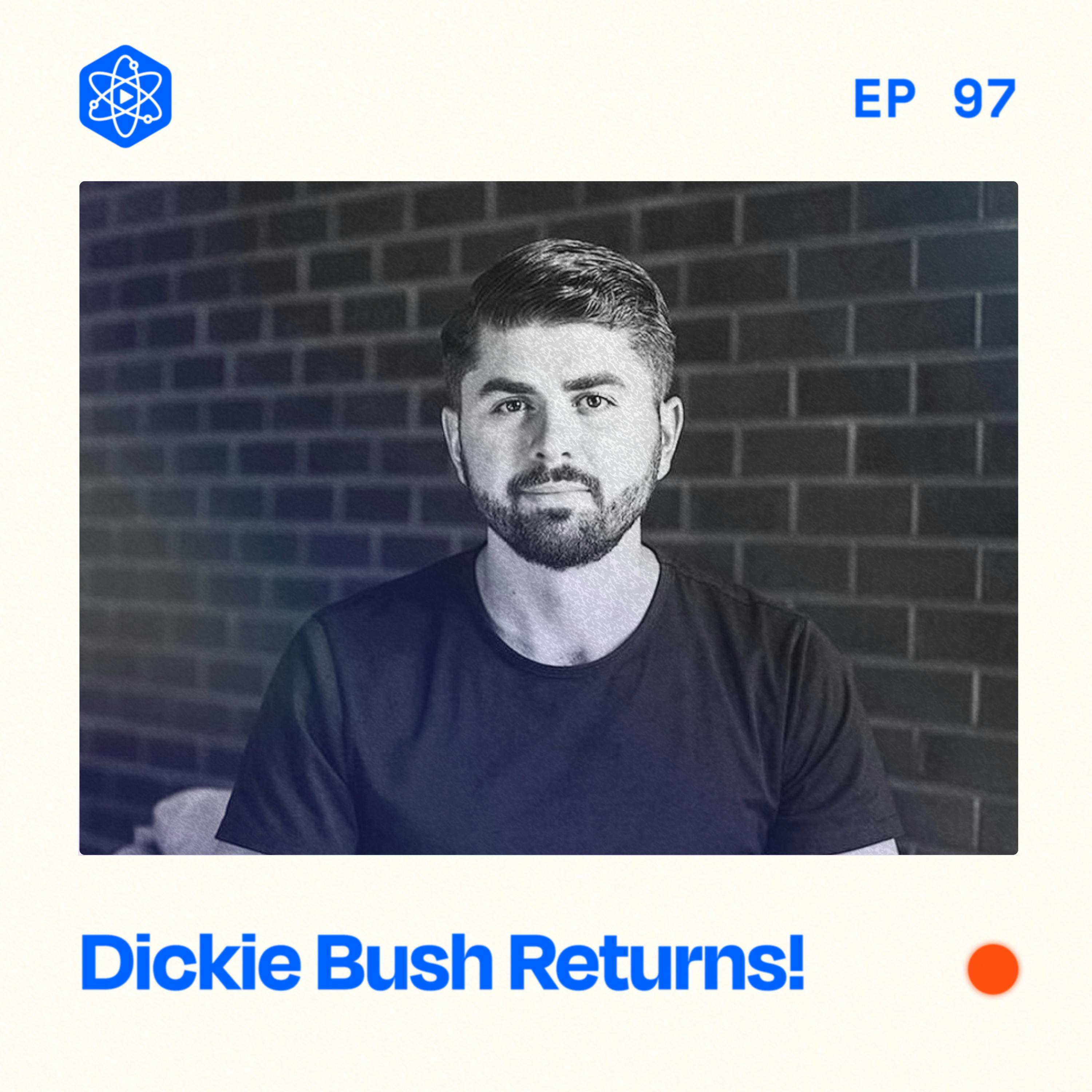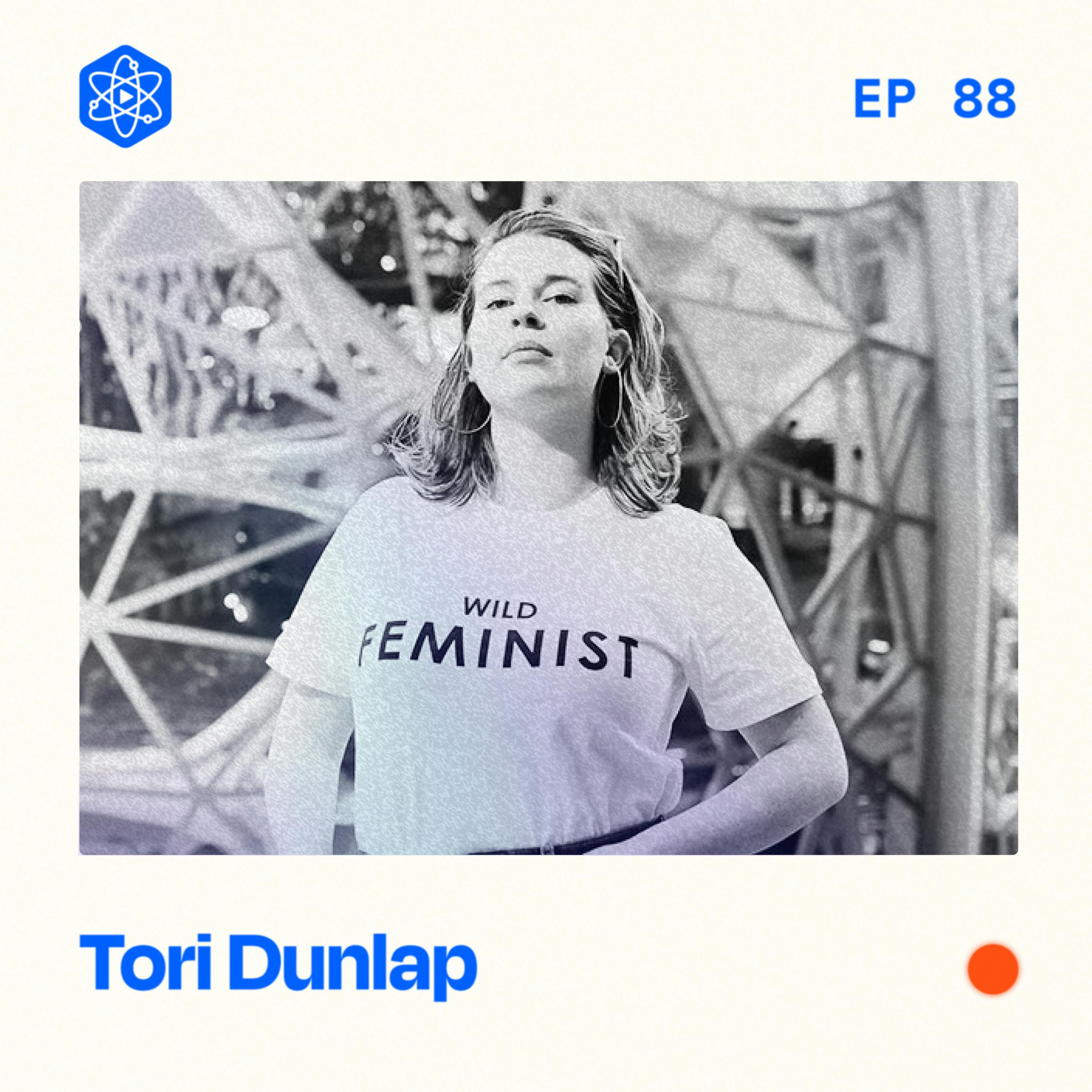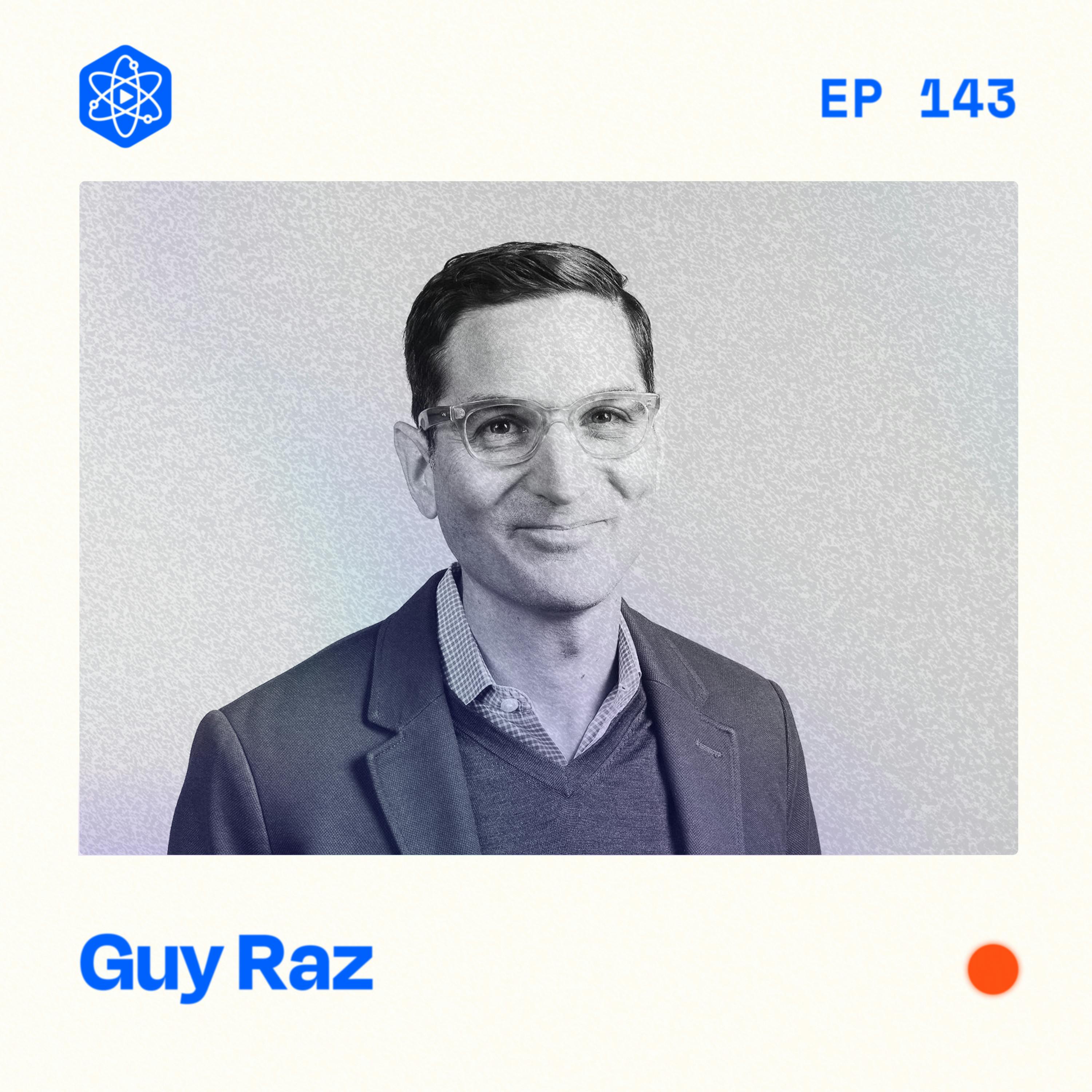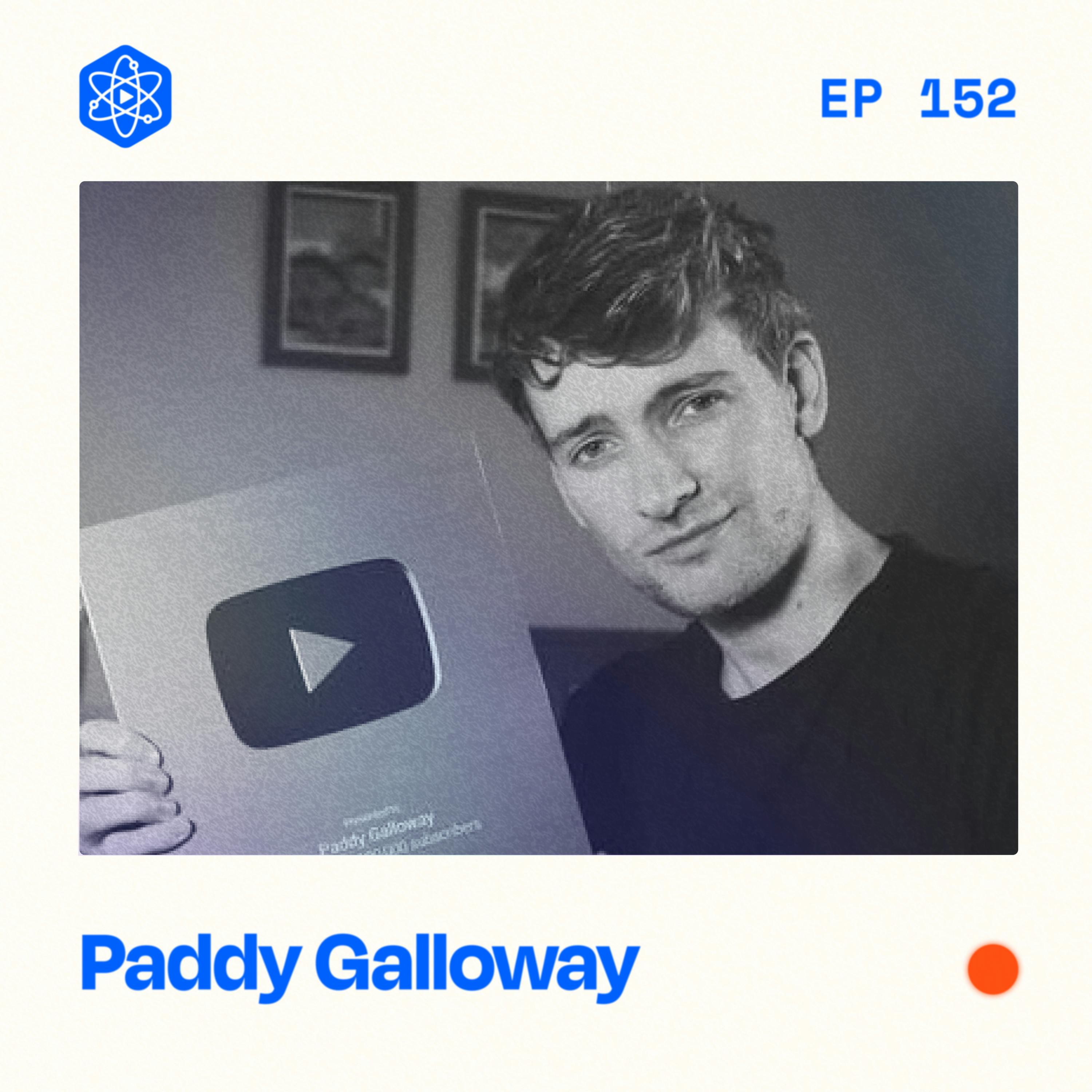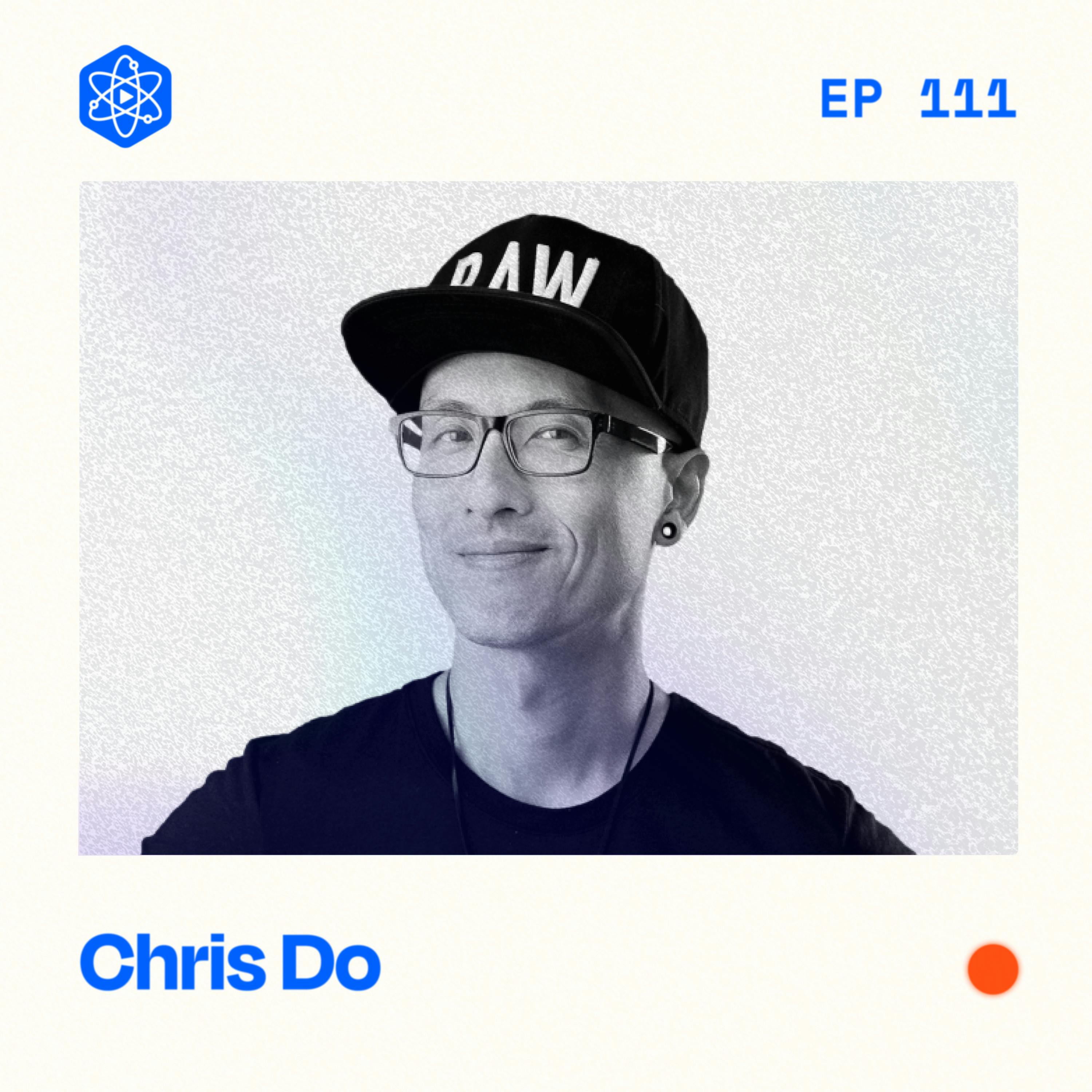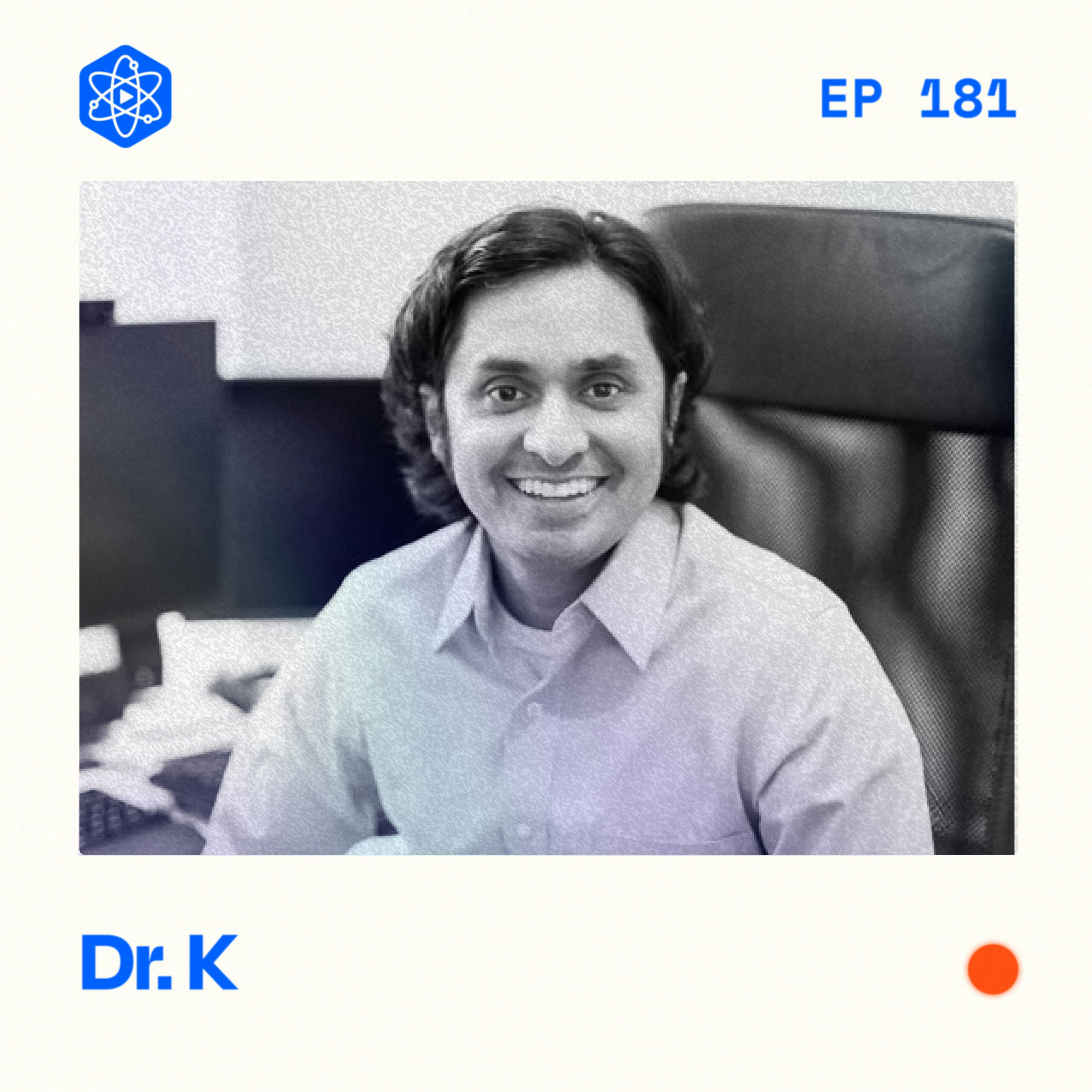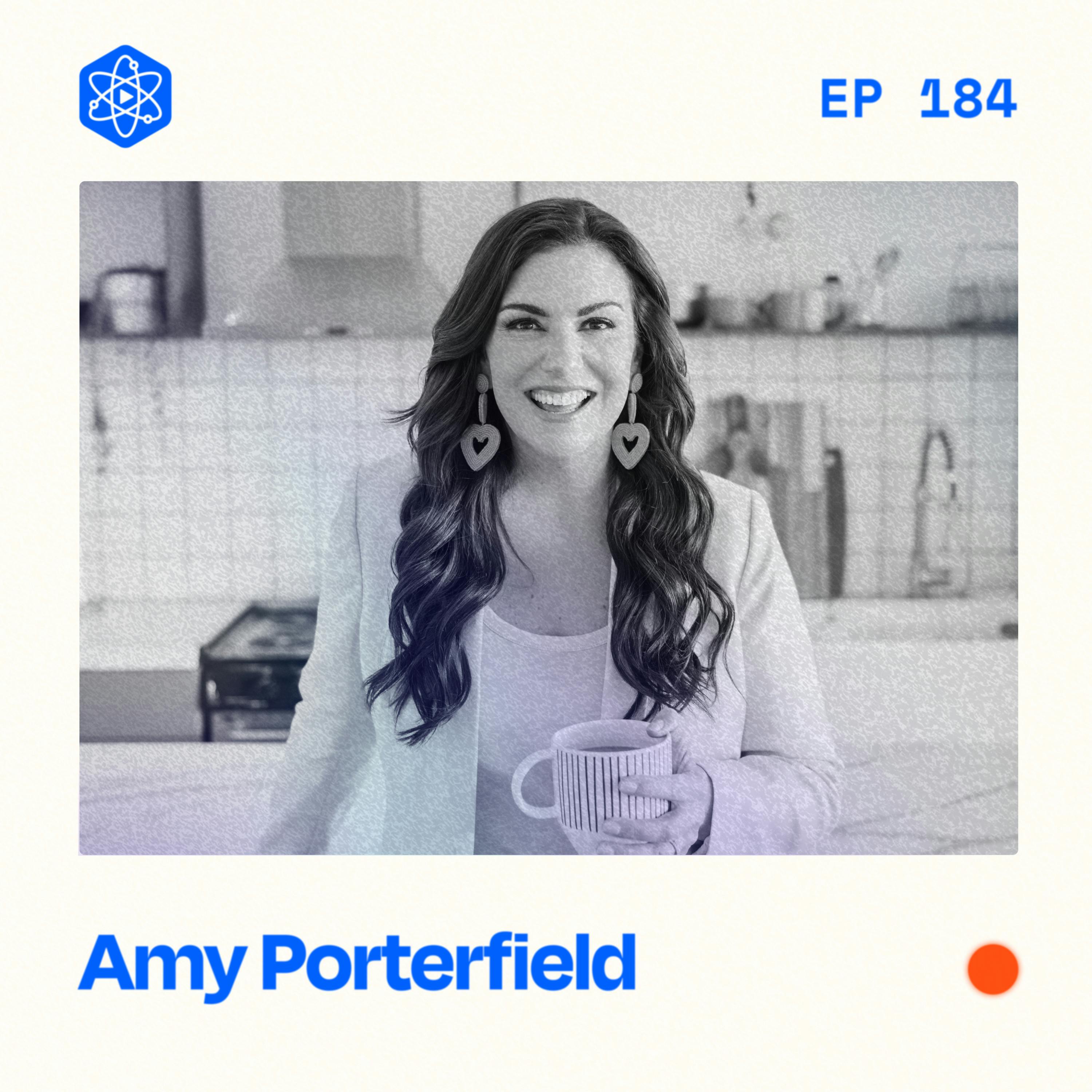Comparing 15 different income streams for creators
I’ve been a full-time creator for 8 years now and have earned $2,192,000 since 2022. I’ve spent a LOT of time and money experimenting with different ways to make money on the internet, so I’m going to rank them. The best and the worst.
I show you 15 different revenue streams and rate them from S to F based on their potential versus the effort required. By the very end of the video, you’ll know which ones are right for you. And at any point, if you agree or disagree, let me know in the comments.
Full transcript and show notes
***
TIMESTAMPS
(00:32) AdSense
(01:36) Sponsorship & Brand Deals
(03:30) Content Memberships
(04:30) Done-For-You Services
(05:27) Royalties
(06:28) 1-to-1 Coaching & Consulting
(07:38) Affiliates
(09:36) User Generated Content (UGC)
(10:17) Group Programs
(11:25) Digital Products
(12:56) Speaking
(14:27) Live Events
(15:53) Community Memberships
***
RECOMMENDED NEXT EPISODE
→ #267: When to use low-ticket offers, refund policies, how much I earned in the last 12 months, and my 5-year vision [Ask CS Pt. 1]
***
ASK CREATOR SCIENCE
→ Submit your question here
***
WHEN YOU'RE READY
📬 Creator Science Newsletter
🚀 Get CreatorHQ (creator operating system)
🧪 Join The Lab (private membership community)
🧞♂️ Get a Personalized Offer
***
CONNECT
🐦 Connect on Twitter
📸 Connect on Instagram
💼 Connect on LinkedIn
📹 Subscribe on YouTube
***
SPONSORS
Jay Clouse [00:00:00]:
Adsense is overrated. In fact, there are seven better ways you can make money as a creator. My name is Jay Clouse and I've been a full time creator for about eight years now, which means I've spent a lot of time and money experimenting with different ways to make money on the Internet. We're going to talk about 15 different revenue streams and rate them from S to F tier based on how much potential they have versus how much effort they require. By the very end of this video, you'll know which ones are right for you. And at any point, if you agree or disagree, let me know in the comments. Let's start with AdSense, which I'm sending straight to C tier. AdSense lives inside a larger umbrella called Programmatic Advertising.
Jay Clouse [00:00:39]:
This is advertising that's placed programmatically into your content without much or any effort from you. Besides AdSense, another example is the Spotify ad network or SPAN. In podcasting, you don't have to create the ad, you don't have to voice the ad, you barely have to think about the ad. But money just shows up. But you don't have much influence over how successful that ad is. It can feel like an interruption to your content. You may not even be able to control who is advertising in your content. Most creators, YouTubers especially, think getting monetized is having programmatic ads like AdSense.
Jay Clouse [00:01:13]:
But especially when you're just hitting the threshold for getting monetized on YouTube, this doesn't actually add up to that much money at any audience size. You can monetize more effectively through different revenue streams than programmatic ads, but this does feel like free money. But like Colin and Samir told me in my interview with them, you can't really budget around this or count on it. So all things considered, I give this a C Next up Sponsorship and Brand Deals Starting with Sponsor Integrations Integrations are bits of sponsored content inside your regular content. It's a short ad in your YouTube video, a sponsored slot in your newsletter, or an ad read in your podcast. The nice thing about integrations are they go inside the content you're already making. So it's a nice revenue stream with just a little bit of extra work. But sponsors need to be vetted.
Jay Clouse [00:01:59]:
They are paying to benefit from the attention and trust that you're working hard to earn. And a bad sponsor integration can burn that trust. This may also hurt performance of the content as a whole if it's done poorly. Now let's talk about dedicated sponsored content. These are net new pieces of content that you're creating simply because the brand paid you to. The good thing is typically these pay more than integrations. The bad thing is it takes a lot more effort. You spend a lot more time created dedicated content because again, the brand is paying you to do that.
Jay Clouse [00:02:28]:
And the other major downside that most creators don't think about is that this comes at a huge opportunity cost. An opportunity cost means the cost you pay for doing thing A when you could be doing thing B, C or D instead. The opportunity cost of doing dedicated sponsored content is that you can't be doing your own content or creating your own products or doing things that benefit your business long term. Dedicated sponsored content is a short term win, but kind of a long term cost. All in. I've earned just over $360,000 in sponsorship since 2022, so it can be a lucrative revenue stream. So here's the takeaway. Brand deals and sponsored content feel like an easy revenue stream.
Jay Clouse [00:03:09]:
So it's good if you don't have your own products yet. Brands pay you because they know how valuable your audience trust and attention is. They pay you because they make more from the sponsorship than what they are paying you. That means you have the opportunity to be earning more trust and attention with your own products, which we'll talk about soon. For all those reasons, I'm sending this to D tier. Next up we have content memberships. Membership products have a spectrum from content based to community based and we'll talk about both. Content based memberships have premium content behind a paywall, sort of like Netflix.
Jay Clouse [00:03:43]:
Memberships in general are great because they are subscription based and recurring revenue is the best. It makes month to month finances feel a lot easier, more comfortable and less stressful. These are fairly easy to sell because the value should be obvious. You pay me and you get access to A, B and C on the other side of the paywall. And then you can promote each new piece of content as the reason to join the membership. Right now the challenge is most content memberships are relatively low priced. We're talking ten twenty dollars a month. This means that you need a lot of members for this to become a significant income stream.
Jay Clouse [00:04:14]:
Content memberships also tend to have shorter lifespans than community memberships, which we'll talk about a little bit later. But if you are able to keep people engaged and sticking around, your income can grow every month without needing a ton of new customers. And for that reason, I'm giving content memberships an A. Next up, we have done for you services. This is right in the name. These are services where you do the work for the customer, they have a specific goal or outcome, they pay you and you do all the work to deliver that outcome. Examples include setting up a tool like Circle, building somebody's website, or managing their social media accounts. Done for your services are the easiest way to get started.
Jay Clouse [00:04:52]:
People have problems and they're willing to pay for them to be solved. The more painful the problem or the more successful the customer, the more they're willing to pay. Andy Warhol once said that the secret to being an artist is to sell your art to rich people because they have rich friends. And there's some wisdom in that. The problem is these services may be one off projects and once they're done, you're right back where you started looking for your next client. And delivering these services takes a lot of time. It's easy to get stuck doing work for clients and never build your own thing that makes money while you sleep. For those reasons, I no longer offer any done for you services and I give this a rating of D.
Jay Clouse [00:05:27]:
Royalties Royalties are one of the hardest types of revenue to generate, but arguably the most valuable. Royalties come from licensing agreements. Someone else pays for the right to sell your products and you simply take a cut of what they sell. Some people call this mailbox money because once you have a licensing deal, royalty checks just show up in your mailbox or I guess your email box. The challenge here is getting some sort of licensing agreement. You need to develop and have clear ownership rights over some type of IP intellectual property. A lot of inventors live on licensing deals. They invent some type of tool or technology, they patent it and license that patent to manufacturers.
Jay Clouse [00:06:04]:
That's a hard game to get into. For creators, your best shot is probably in publishing, with the best example being traditionally published books. The publisher buys the rights to sell your book and you get a royalty on each copy sold. I'm a course instructor for LinkedIn learning. I've made seven courses for the platform and those are publishing agreements. So since 2022 I've earned over $100,000 in royalties. It's hard to do, but when you have it, it is definitely S tier. Next up, we have one to one coaching and consulting.
Jay Clouse [00:06:31]:
Coaching and consulting may sound like the same thing, but I see them as slightly different. To me, a coach is a great listener who asks the right questions and helps someone arrive at the right conclusion for them. It's sort of like paid mentorship. Consulting puts more responsibility for the outcome on the consultant. It's less about helping the person self actualize or become a better version of themselves and more. Getting to the ideal project outcome as quickly as possible. When consulting requires a lot of direct action implementation work. I then consider it a done for you service.
Jay Clouse [00:07:01]:
Since 2022 I've earned about $66,000 from One on One Coaching and Consulting. What I like about this offer is that it basically monetizes your brain. It doesn't require prep or much implementation. You get to learn about your audience while also getting paid to help them. It's really quick to set up and start selling, but this doesn't create any type of reusable asset. You sell your time and you have money, but that time is gone and won't be generating any new income for you in the future. Selling any of your time comes at a cost. You could be using that time instead to create content or a more evergreen digital product, which we'll talk about soon.
Jay Clouse [00:07:33]:
For those reasons, I no longer offer one on one coaching or consulting and I give this a rating of C. Next up we have Affiliates Affiliate sales are easy to get started. You don't need to create a product, you just need to make a compelling case for why someone should buy this product. You can start generating income from referrals right away, but not all affiliates are created equal. There are recurring affiliates and non recurring affiliates. Non recurring affiliate sales are one off commissions on a product that you help sell. If you link to a product on Amazon from your YouTube channel that will generate a non recurring affiliate sale. There are more opportunities to sell non recurring affiliates, and some of these products can be pretty expensive.
Jay Clouse [00:08:10]:
If you sell a $3,000 camera and get a 3% cut from Amazon, that's $90 in your pocket. But that's still a small cut of a large amount of revenue that you've created for Amazon. And companies who offer affiliates are known for reducing or even eliminating affiliate commissions over time. For that reason, I put non recurring affiliates in the C tier. But now let's talk about recurring affiliates. Recurring affiliate sales come from subscription products, typically software. I'm an affiliate for Circle and Kit. I love both of those products and when I send them a customer, that customer pays them a monthly or annual subscription.
Jay Clouse [00:08:42]:
So not only do I get an affiliate commission on the initial purchase, but I get a commission every time their subscription renews too. And those commissions are often around 30% 10x the typical Amazon commission. Sometimes recurring affiliates exist in memberships too. I offer members of my community, The Lab, a 25% recurring affiliate commission for anyone they refer to the community. That means that sometimes I send payments of $999.75 for a single referral, and that can recur every year they renew. Recurring affiliates are less common, but still pretty available and easy to get set up. The risk, of course, is that affiliate programs can be reduced or eliminated, and you're still only getting a fraction of the revenue that you're helping to generate. Since 2022, I've earned $108,000 from affiliate commissions, and that's almost entirely recurring affiliate revenue.
Jay Clouse [00:09:29]:
Because the effort is low and this can become a growing monthly recurring revenue stream. I put this in the A tier. Next up, we have user generated content. User generated content is images, videos, or any type of content showcasing a brand's products. But instead of just posting this through your own channels like a typical brand deal, you give these assets to the brand for them to use however they want on their website, their social accounts. They may run paid ads to it. Brands are constantly looking for this, and you don't need an audience to create content for the brand to post their own channels. This even does give you some practice and experience creating content.
Jay Clouse [00:10:04]:
But you're not growing your own audience. It's eating into your time, which takes away from creating your own content or creating your own products. And for that reason, I rate this below typical sponsorship and brand deals and give it an F. Next up, we have group programs. Group programs are similar to one on one coaching programs, but instead of spending that time with just one customer, you work with a small group of people at the same time. And really that group can be as big as you want. The great thing about group programs is you can scale your hourly rate. If one person in the group pays $100 for an hour of your time, but you're able to pull a group of five people together, your hourly rate is effectively $500.
Jay Clouse [00:10:42]:
It's like you're getting the benefit of five coaching clients, but at the cost of one, because you're spending one hour instead of five. Some people also prefer group experiences. Not only can they work with and learn from you, but there's a social component too. They're making friends or they're meeting new collaborators. The challenges here are demand and timing. You need a big enough audience that you have demand for group programs, and that demand needs to be at the same time. If your group program has a specific start date, and it will, you need everybody to be ready to go and paid up before that start date. This is your own product, which I love, and when it works, it really works.
Jay Clouse [00:11:17]:
I know creators earning millions of dollars per year running a couple of cohorts of live group programs, and for that reason, I'm giving this a B. Next up, we have digital products. Digital products can take a lot of different forms, but they are created and accessed totally online. Examples are courses, templates, and ebooks. These are some of my personal favorites because it's a direct relationship to your audience for a product you made, you control and you know is valuable. Since 2022, I've earned $321,000 from digital products. 60% of that is from courses, and 40% of that is from my Notion Template Creator HQ, which if you're a creator, you should really consider. It's like having a personal assistant, even if you can't afford one yet.
Jay Clouse [00:11:59]:
There's a link to that in the description. Digital products are great because they have no cost of goods. It's all margin. If you sell a digital product for $100, that's $100 going right into your bank account. Well, minus processing fees, digital products are assets. You build them once and sell them twice, as Jack Butcher would say, except you can sell them an infinite number of times without spending any more time or any more money on development. The challenge of course is making a good digital product. It takes time to build something really good, and if it doesn't take time to make, then someone else will make their own version and sell it for cheaper.
Jay Clouse [00:12:32]:
Another challenge is that if you're selling courses, they need to be updated periodically. If they become outdated or just start to kind of feel stale, you probably want to update them. And the other downside of digital products is that they are just one time purchases. There's no recurring revenue here. I love digital products. There's a ton of potential here, but because there is a lot of effort involved and no recurring revenue, I give these a solid B. Next up, we have speaking gigs. Speaking is pretty self explanatory.
Jay Clouse [00:12:59]:
There are a lot of events that host speakers. It seems glamorous and for some speakers it really is. When you're a well known person with a book or some other project, you can get paid really well to speak. I have friends who earn as much as $250,000 for a single speech. That's uncommon. Most paid speakers earn in the four or five figures. I've personally been paid $10,000 as my highest paid speaking gig, and since 2022 I've only earned about $33,000 in speaking gigs. But here's the catch.
Jay Clouse [00:13:28]:
Most events with speakers don't actually pay their speakers. Maybe they cover Travel and Lodging so a lot of aspiring speakers invest a ton of time crafting talks, building relationships to get on stages that don't pay or pay very little. And then they take a lot of time out of their week to travel, rehearse and deliver that talk. Whether you're paid or not, speaking requires a ton of travel. Full time speakers often spend more nights in hotels than in their own home. To me, the travel and leaving my family just isn't worth it. So the sweet spot here is only taking a small number of speaking gigs that pay really well. Otherwise it's just not worth the time and effort.
Jay Clouse [00:14:03]:
If you're not getting opportunities for gigs that pay well, then you should focus your time on becoming somebody who can get paid well to speak, build a successful business, write a book, something like that. Leave speaking for later. Speaking only works well for a tiny fraction of people, but for those it works really well. So I'll give this a C rating overall. But if you're an author who can do a few gigs a year and make hundreds of thousands of dollars, it may be S tier Next up we have event tickets. Some creators host their own events as paid experiences. This doesn't necessarily need to be a large scale conference. It could be an online virtual summit, an in person mastermind, or even a destination style retreat like digital products.
Jay Clouse [00:14:41]:
This is a direct relationship with your audience and a product that you control. You control every aspect of this experience. When people pay for an event ticket, it really shows a level of depth to the relationship. They're willing to invest time to attend your thing rather than doing literally anything else at that time in person. Events are magical. You can't even predict the life changing serendipity that happens when people get together. And if you keep a lot of the details the same, you can build a repeatable format that you do each year, slowly building up the number of attendees. But depending on how big of an event you're doing, this can be a massive investment of time and money.
Jay Clouse [00:15:16]:
It's risky, it hinges on ticket sales and you spend a lot of cash up front before you begin collecting revenue from the ticket sales. There are also a lot of factors outside of your control besides weather. I know of a lot of creators who lost a lot of money from events that they planned during the COVID 19 pandemic. The sneaky benefit to events is that you can build them to be standalone brands and sellable assets. If you build a great event that happens each year, you may be able to sell that event brand at some point in the future. That's what happened to VidCon. This is a rare opportunity for creators who are typically building brands behind their own name. So for those reasons, I'm giving events a B.
Jay Clouse [00:15:53]:
Next up, community memberships. Community memberships may include premium content like content memberships do, but they focus more on creating peer to peer experiences. The value in community memberships comes from the interaction between members. This is my personal favorite. Of the $2.2 million my business has made since 2022, 1.2 million has come from my membership community, the Lab. The Lab is my membership for professional creators to experiment and grow together. Everyone in there is taking this content thing really seriously and sharing in real time what's working for them across platforms so that we can all benefit from everyone else's experiments. Community memberships earn recurring revenue, but you have to keep earning that revenue each month.
Jay Clouse [00:16:35]:
When the value of your membership is in the relationships and interactions you build with other members, some of that is out of your control. You have to create the right environment for people to get value. But a lot of that value comes from the community itself. I can't make people share their experiments. I just have to try and create a culture where people want to do that. Community memberships are a little bit harder to sell too. I can't tell you that you should join the Lab because you'll specifically have a great conversation with Becky that will change your life. But that could happen.
Jay Clouse [00:17:02]:
It could happen with any of our members. For that reason, most memberships have both premium content and and community interaction. The Lab includes all of my courses and creator HQ. That notion template I was telling you about. It's $1,300 worth of paid products alone. And that's before you get the benefit of learning from others. Memberships may be harder to sell, but they can command a higher price. The lab has three tiers of 699, 1999 and $39.99.
Jay Clouse [00:17:27]:
A great community membership often has higher retention than content memberships too. As a result, the lab generates 40 to $50,000 per month on average. Community memberships have changed my life and the lives of so many other creators that I know. So I'm giving this an S tier rating. By the way, I know since you've watched this far, you're probably the right type of person to join the Lab. And there's a link in the description to learn more, so some overall suggestions. The best place to start for beginners is affiliates. It's like sponsorship, but you get paid on performance and not upfront but just about anybody can be an affiliate regardless of audience size and some of those affiliate fees are recurring.
Jay Clouse [00:18:01]:
The quickest way to make money is consulting or done for you services. People will pay you to do work and solve problems for them regardless of how big your audience is. And the best income stream for longevity is community memberships. The Lab just turned 4 years old and has been increasing in revenue every single year. If you want a full list of different product ideas, check out the link in the description and you might have noticed that there was one very common YouTuber revenue stream missing from this list. Merch. And that's because I've just never sold physical products and I can't really rate something I have no experience with. But I have interviewed people who do physical products really really well.
Jay Clouse [00:18:36]:
And if you want to learn more about merch from some of the best, check out these interviews with Chef PK and Kevin from Epic Gardening.











